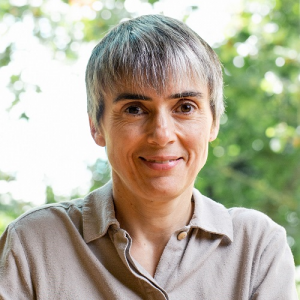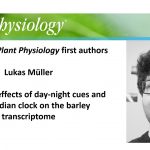Plantae Presents: Ottoline Leyser and Sarah Robinson
Due to the COVID-19 pandemic many seminar series and conferences have been canceled or postponed. In response to this, and to make sure plant scientists can continue to communicate their latest work to their peers, The American Society of Plant Biologists launched a virtual seminar series via our online community, Plantae. This is the first video in this new series, each of which features two speakers (read more). A list of upcoming seminars and recorded videos can be found here.
Recorded April 1, 2020
 Ottoline Leyser: A long distance talk about long distance signalling
Ottoline Leyser: A long distance talk about long distance signalling
Ottoline Leyser is the Director of the Sainsbury Lab, University of Cambridge. Ottoline was an undergraduate and PhD student at Cambridge. She completed her postdoc with Mark Estelle at Indiana University, where she contributed to the understanding of the auxin signaling pathway and the development of Arabidopsis as a model organism. Her subsequent work has uncovered insights into strigolactone signaling and branching. @OttolineLeyser
 Sarah Robinson: The Mechanics of Size
Sarah Robinson: The Mechanics of Size
Sarah Robinson is a Career Development Fellow with a Royal Society University Research Fellowship at the Sainsbury Lab at the University of Cambridge. She was an undergraduate at the University of Cambridge, did her PhD with Enrico Coen at the John Innes Centre, and her postdoc with Cris Khulemeier at the University of Bern in Switzerland. @RobinsonSci
This webinar is freely available thanks to the support of the American Society of Plant Biologists. Join Today.

If you would like to sponsor an upcoming webinar please contact [email protected]




Sarah Robinson, thank you for the talk as well as for the simple and elegant mathematical model. How can you be sure that the tension condition of your experiments doesn’t correspond to a normal condition? Do you stitch plants to the pulling stage somehow?
Dear Alexandra, Thank you for your question. Our modelling and the work of others shows that it is normal for the epidermis to be under tension compared to the inner tissue layers. However, in this experiment, we apply an additional tensile force to the whole plant. If you put a plant into the device and measure the force it will generate a pushing force if constrained, tension would be measured as a pulling force. However, you are correct that we don’t change the normal distribution of stresses in the tissue. We attach the sample to the stage using Tough Tags and medical adhesive glue.